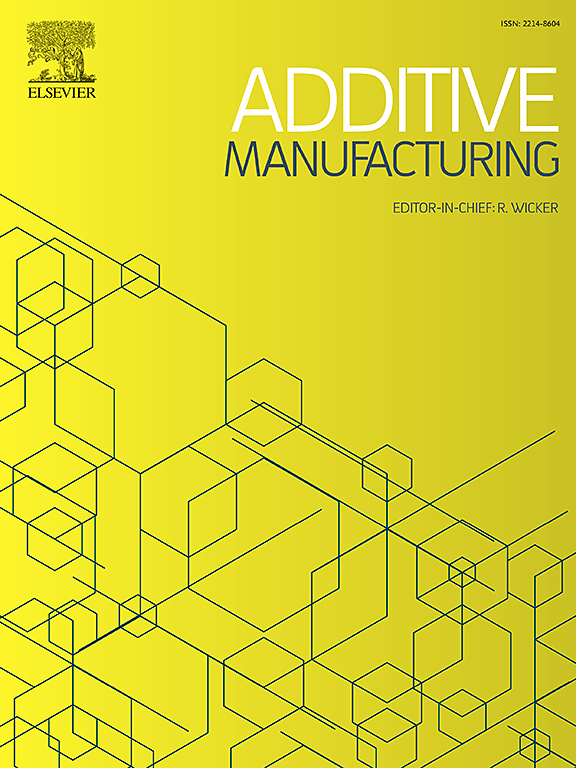还原光聚合3D打印翘曲校正
IF 10.3
1区 工程技术
Q1 ENGINEERING, MANUFACTURING
引用次数: 0
摘要
翘曲或卷曲变形对打印精度和聚合物表征有显著的负面影响。还原光聚合(VP) 3d打印的固有机制加剧了这一问题。在VP辐照步骤中,先前层吸收的光能量积累,导致与新层相比固化程度的差异。这会导致个别印刷层收缩不均匀,从而导致弯曲变形。在这项研究中,我们通过使用修正的比尔-朗伯定律确保所有层均匀吸收光能来纠正翘曲。我们研究了翘曲和修正样品的翘曲角,随层数和零件厚度的变化。此外,我们进行了动态力学分析(DMA)的三点弯曲试验,以验证校正样品测量结果的一致性。结果表明,在不同的打印参数显著改善翘曲和增强一致性的DMA测试。值得注意的是,本研究为新开发树脂的打印参数设置提供了简单、可靠的指导,确保了可靠的样品来表征聚合物。本文章由计算机程序翻译,如有差异,请以英文原文为准。
Warpage correction for vat photopolymerization 3D printing
Warp or curl distortion significantly negatively impacts print accuracy and polymer characterization. This issue is exacerbated by the inherent mechanisms of vat photopolymerization (VP) 3d printing. In the VP irradiation step, the amount of the light energy absorbed in the prior layers accumulates, leading to a difference in the degree of curing compared to a newer layer. This causes uneven shrinkage of the individual printing layers, which causes bending deformation. In this study, we corrected the warpage by ensuring uniform light energy absorption across all layers using the modified Beer-Lambert’s law. We investigated the warpage angle of both warped and corrected samples, varying by layer and part thickness. Furthermore, we conducted three-point bending tests of dynamic mechanical analysis (DMA) to verify the consistency of measurements from the corrected samples. The results show significant improvements in warpage across various printing parameters and enhanced consistency in DMA tests. Significantly, this study offers straightforward, robust guidance for setting printing parameters of newly developed resins, ensuring reliable samples to characterize polymers.
求助全文
通过发布文献求助,成功后即可免费获取论文全文。
去求助
来源期刊

Additive manufacturing
Materials Science-General Materials Science
CiteScore
19.80
自引率
12.70%
发文量
648
审稿时长
35 days
期刊介绍:
Additive Manufacturing stands as a peer-reviewed journal dedicated to delivering high-quality research papers and reviews in the field of additive manufacturing, serving both academia and industry leaders. The journal's objective is to recognize the innovative essence of additive manufacturing and its diverse applications, providing a comprehensive overview of current developments and future prospects.
The transformative potential of additive manufacturing technologies in product design and manufacturing is poised to disrupt traditional approaches. In response to this paradigm shift, a distinctive and comprehensive publication outlet was essential. Additive Manufacturing fulfills this need, offering a platform for engineers, materials scientists, and practitioners across academia and various industries to document and share innovations in these evolving technologies.
 求助内容:
求助内容: 应助结果提醒方式:
应助结果提醒方式:


